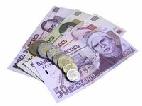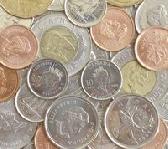
 |
|
| Financial Terms | |
| Current asset |
|
Information about financial, finance, business, accounting, payroll, inventory, investment, money, inventory control, stock trading, financial advisor, tax advisor, credit.
Main Page: inventory, financial, credit, accounting, investment, payroll, money, tax advisor, |
Definition of Current asset
Current assetTypically the cash, accounts receivable, and inventory accounts on the
Related Terms:Current assetsValue of cash, accounts receivable, inventories, marketable securities and other assets that Other current assetsValue of non-cash assets, including prepaid expenses and accounts receivable, due Current assetsCash, things that will be converted into cash within a year (such as accounts receivable), and inventory. Current assetsAmounts receivable by the business within a period of 12 months, including bank, debtors, inventory and prepayments. current assetscurrent refers to cash and those assets that will be turned Current AssetsCash and other company assets that can be readily turned into cash within one year. Acid-test ratioAlso called the quick ratio, the ratio of current assets minus inventories, accruals, and prepaid  Carring costsCosts that increase with increases in the level of investment in current assets. Current maturitycurrent time to maturity on an outstanding debt instrument. Current ratioIndicator of short-term debt paying ability. Determined by dividing current assets by current Margin callA demand for additional funds because of adverse price movement. Maintenance margin Net working capitalcurrent assets minus current liabilities. Often simply referred to as working capital. Quick assetscurrent assets minus inventories. Quick ratioIndicator of a company's financial strength (or weakness). Calculated by taking current assets Self-liquidating loanLoan to finance current assets, The sale of the current assets provides the cash to repay Shortage costCosts that fall with increases in the level of investment in current assets.  Working capitalDefined as the difference in current assets and current liabilities (excluding short-term Working capital managementThe management of current assets and current liabilities to maximize shortterm liquidity. ACID-TEST RATIOA ratio that shows how well a company could pay its current debts using only its most liquid or “quick” assets. It’s a more pessimistic—but also realistic—measure of safety than the current ratio, because it ignores sluggish, hard-toliquidate current assets like inventory and notes receivable. Here’s the formula: Current ratioA ratio that shows how many times a company could pay its current debts if it used its current assets to pay them. The formula: NOTES RECEIVABLENotes receivable are promissory notes that the company has accepted from its debtors. Most promissory notes pay interest. Those that are due within a year are shown under “current assets.” Those that mature in more than a year would be listed under “Long-term assets.” If a note is being Working capitalcurrent assets less current liabilities. Money that revolves in the business as part of the process of buying, making and selling goods and services, particularly in relation to debtors, creditors, inventory and bank. Indirect methodA method of preparing the operating section of the Statement of Cash Flows that does not use the company’s actual cash inflows and cash outflows, but instead arrives at the net cash flow by taking net income and adjusting it for noncash expenses and the changes from last year in the current assets and current liabilities. current ratioCalculated to assess the short-term solvency, or debt-paying Current RatioA measure of the ability of a company to use its current assets to Quick RatioA measure of how easily a company can use its most liquid current working capitaltotal current assets minus total current liabilities  Accounts receivableA current asset on the balance sheet, representing short-term Marketable securityAn easily traded investment, such as treasury bills, which is Quick assetAny asset that can be converted into cash on short notice. This is a subset Working capitalThe amount of a company’s current assets minus its current liabilities; carrying costsCosts of maintaining current assets, including opportunity cost of capital. net working capitalcurrent assets minus current liabilities. shortage costsCosts incurred from shortages in current assets. Working Capitalcurrent assets minus current liabilities Current Ratiocurrent assets divided by current liabilities. This ratio indicates the extent to which the claims of short-term creditors are covered by assets expected to be converted to cash in the near future. Working CapitalFunds invested in a company's cash, accounts receivable and inventory. Net working capital is current assets minus current liabilities. Acquisition of assetsA merger or consolidation in which an acquirer purchases the selling firm's assets. AssetAny possession that has value in an exchange. Asset/equity ratioThe ratio of total assets to stockholder equity. Asset/liability managementAlso called surplus management, the task of managing funds of a financial Asset activity ratiosRatios that measure how effectively the firm is managing its assets. Asset allocation decisionThe decision regarding how an institution's funds should be distributed among the Asset-backed securityA security that is collateralized by loans, leases, receivables, or installment contracts Asset-based financingMethods of financing in which lenders and equity investors look principally to the Asset classesCategories of assets, such as stocks, bonds, real estate and foreign securities. Asset-coverage testA bond indenture restriction that permits additional borrowing on if the ratio of assets to Asset for asset swapCreditors exchange the debt of one defaulting borrower for the debt of another Asset pricing modelA model for determining the required rate of return on an asset. Asset substitutionA firm's investing in assets that are riskier than those that the debtholders expected. Asset substitution problemArises when the stockholders substitute riskier assets for the firm's existing Asset swapAn interest rate swap used to alter the cash flow characteristics of an institution's assets so as to Asset turnoverThe ratio of net sales to total assets. Asset pricing modelA model, such as the Capital asset Pricing Model (CAPM), that determines the required AssetsA firm's productive resources. Assets requirementsA common element of a financial plan that describes projected capital spending and the Capital asset pricing model (CAPM)An economic theory that describes the relationship between risk and Current accountNet flow of goods, services, and unilateral transactions (gifts) between countries. Current couponA bond selling at or close to par, that is, a bond with a coupon close to the yields currently Current liabilitiesAmount owed for salaries, interest, accounts payable and other debts due within 1 year. Current issueIn Treasury securities, the most recently auctioned issue. Trading is more active in current Current rate methodUnder this currency translation method, all foreign currency balance-sheet and income Current yieldFor bonds or notes, the coupon rate divided by the market price of the bond. Current-coupon issuesRelated: Benchmark issues Dynamic asset allocationAn asset allocation strategy in which the asset mix is mechanistically shifted in Exchange of assetsAcquisition of another company by purchase of its assets in exchange for cash or stock. Financial assetsClaims on real assets. Fixed assetLong-lived property owned by a firm that is used by a firm in the production of its income. Fixed asset turnover ratioThe ratio of sales to fixed assets. Intangible assetA legal claim to some future benefit, typically a claim to future cash. Goodwill, intellectual Liquid assetasset that is easily and cheaply turned into cash - notably cash itself and short-term securities. Long-term assetsValue of property, equipment and other capital assets minus the depreciation. This is an Limitation on asset dispositionsA bond covenant that restricts in some way a firm's ability to sell major assets. Net asset value (NAV)The value of a fund's investments. For a mutual fund, the net asset value per share Net assetsThe difference between total assets on the one hand and current liabilities and noncapitalized longterm Non-reproducible assetsA tangible asset with unique physical properties, like a parcel of land, a mine, or a Policy asset allocationA long-term asset allocation method, in which the investor seeks to assess an Publicly traded assetsassets that can be traded in a public market, such as the stock market. Real assetsIdentifiable assets, such as buildings, equipment, patents, and trademarks, as distinguished from a Reproducible assetsA tangible asset with physical properties that can be reproduced, such as a building or Residual assetsassets that remain after sufficient assets are dedicated to meet all senior debtholder's claims in full. Return on assets (ROA)Indicator of profitability. Determined by dividing net income for the past 12 months Return on total assetsThe ratio of earnings available to common stockholders to total assets. Riskless or risk-free assetAn asset whose future return is known today with certainty. The risk free asset is Risky assetAn asset whose future return is uncertain. Risk-free assetAn asset whose future return is known today with certainty. Tactical Asset Allocation (TAA)An asset allocation strategy that allows active departures from the normal Tangible assetAn asset whose value depends on particular physical properties. These i nclude reproducible Total asset turnoverThe ratio of net sales to total assets. Underlying assetThe asset that an option gives the option holder the right to buy or to sell. Wasting assetAn asset which has a limited life and thus, decreases in value (depreciates) over time. Also ASSETSAnything of value that a company owns. Current liabilitiesBills a company must pay within the next twelve months. RATE OF RETURN ON TOTAL ASSETSThe percentage return or profit that management made on each dollar of assets. The formula is: AssetsThings that the business owns. Current liabilitiesAmounts due and payable by the business within a period of 12 months, e.g. bank overdraft, creditors and accruals. Fixed assetsThings that the business owns and are part of the business infrastructure – fixed assets may be Intangible fixed assetsNon-physical assets, e.g. customer goodwill or intellectual property (patents and trademarks). Tangible fixed assetsPhysical assets that can be seen and touched, e.g. buildings, machinery, vehicles, computers etc. Related to : financial, finance, business, accounting, payroll, inventory, investment, money, inventory control, stock trading, financial advisor, tax advisor, credit. |